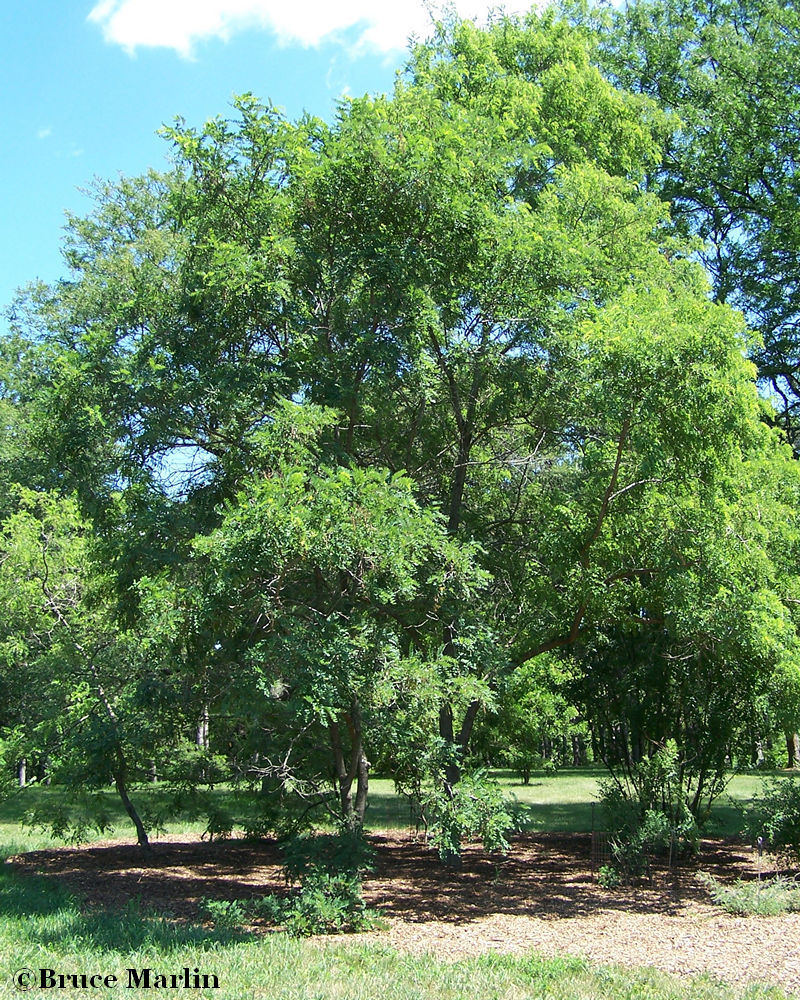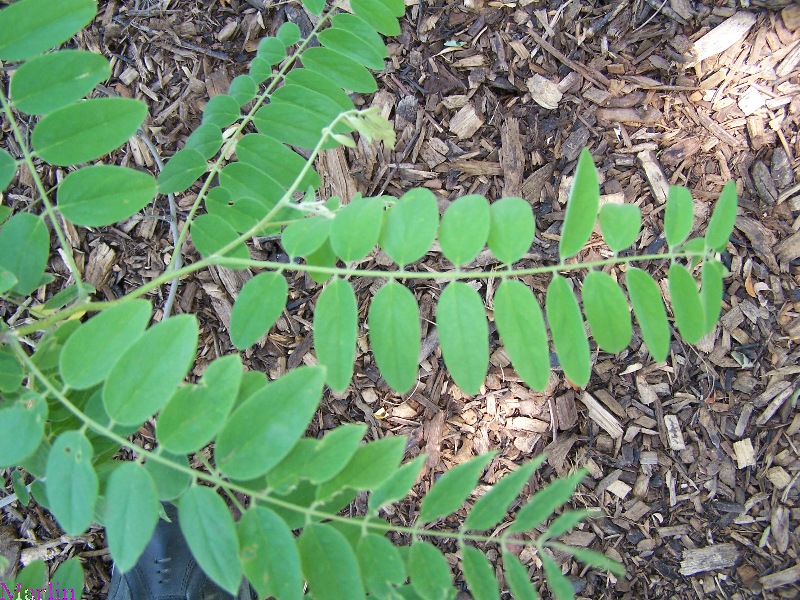Hartwig Locust Tree – Robinia hartwigii

Family: Fabaceae (Leguminosae)
USDA Hardiness Zone: 3. Live specimens photographed at The Morton Arboretum.
Form: Small to medium sized tree to 50 feet with a spreading, open crown.
Leaf: alternate, pinnately or bipinnately compound with 14 to 20 oval to elliptical leaflets each 3/4 to 1 inch long, overall leaf 6 to 8 inches long.
Flower: Greenish white flowers displayed in 2 inch long racemes, appearing after the leaves.
Fruit: Flat, brown, almost round pods, 1 to 2 inches long, each containing 1 to 3 seeds.

The Fabaceae (legumes) are herbs, vines, shrubs, trees, and lianas found in both temperate and tropical areas. They comprise one of the largest families of flowering plants, numbering 630 genera and 18,000 species. The native thorny locust species is found on both sides of the Mississippi River from Nebraska to Texas and from Pennsylvania to Alabama. Fence rows and pastures are common locations.
References
1. Colorado State University, “Sunburst Honeylocust (Gleditsia triacanthos ‘Sunburst’)”
2. Sunburst Honey Locust, Morton Arboretum accession 366-56*1, photos by Bruce Marlin
Family: Fabaceae (Leguminosae)
The Fabaceae, or legumes, are mostly herbs but include also shrubs and trees found in both temperate and tropical areas. They comprise one of the largest families of flowering plants, numbering some 400 genera and 10,000 species. Peanuts, beans, peas, wisteria and locust trees are among the family.
Tree Encyclopedia | Tree Index | Fabaceae Index | Birch | Oak
